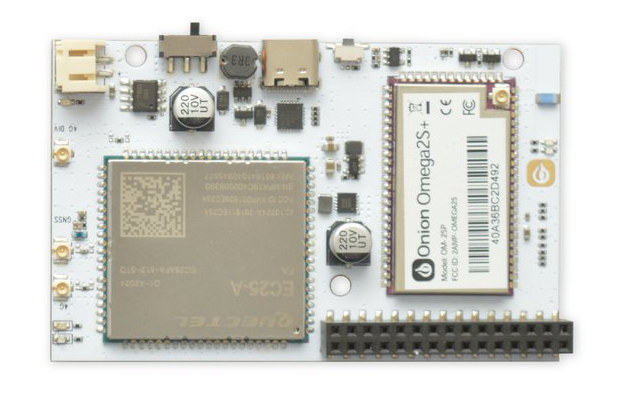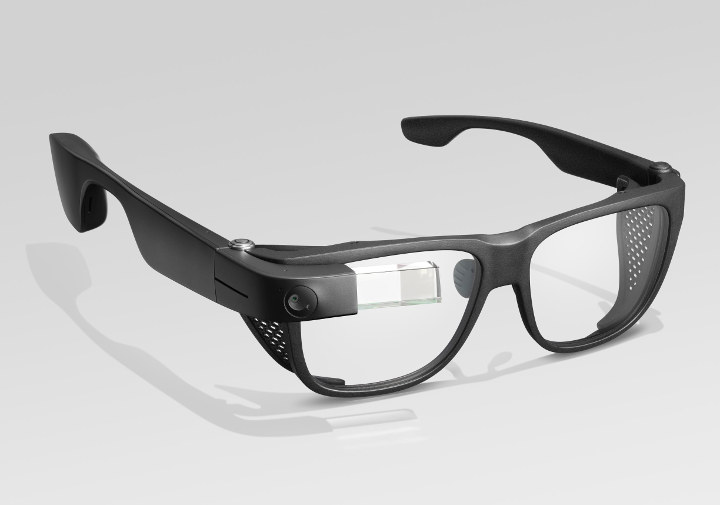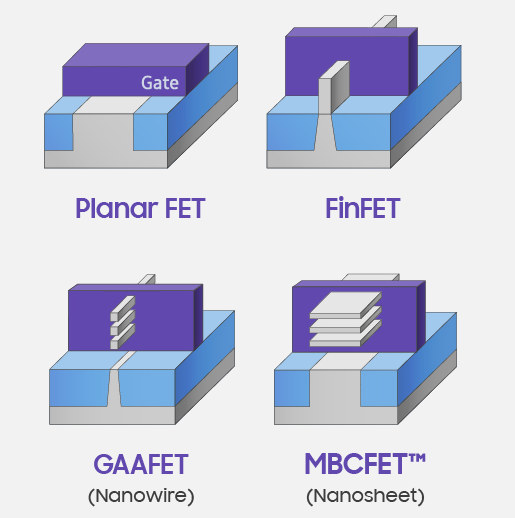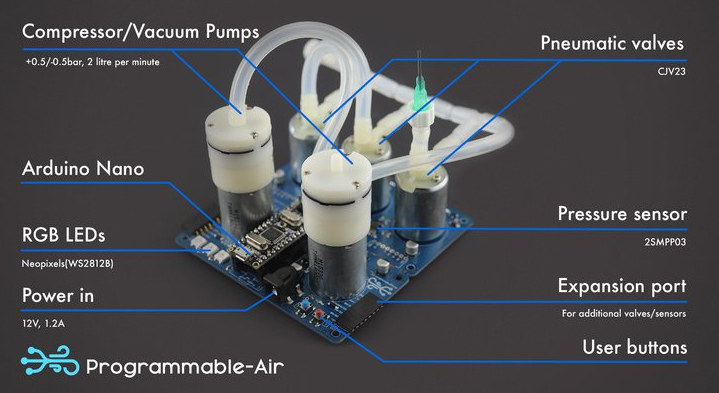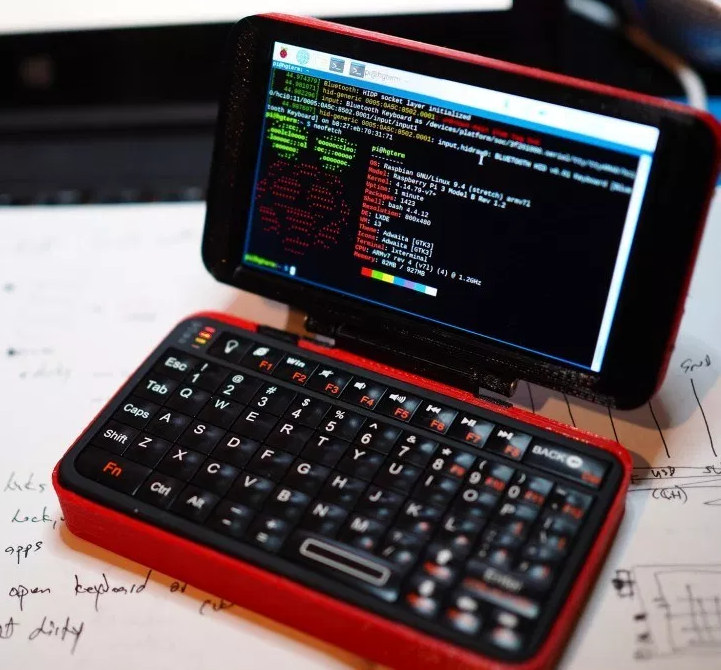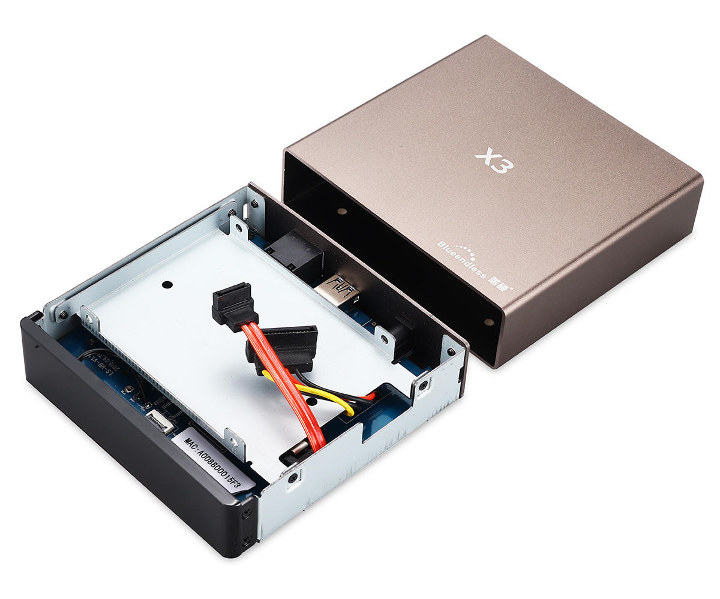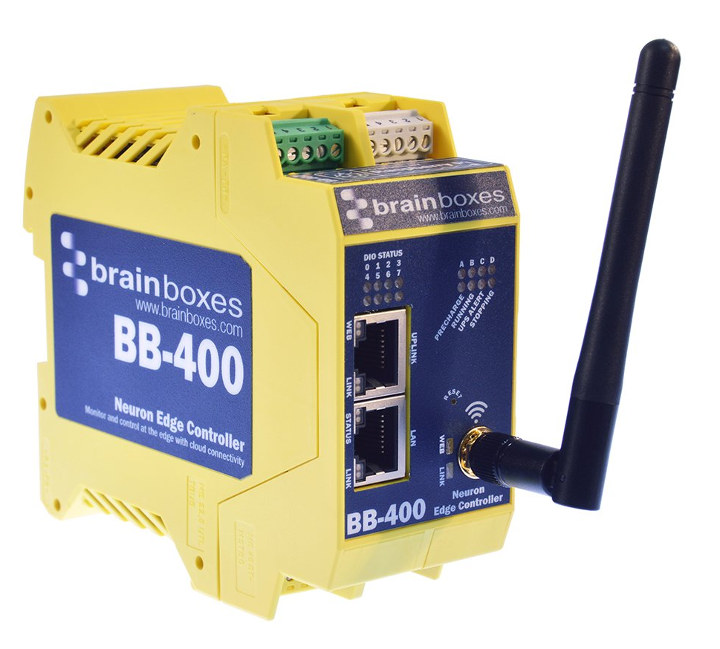Onion has launched several compact OpenWrt WiFi boards for IoT projects over the years starting with their Onion Omega board in 2015, and the latest so far being Onion Omega2 Pro with a massive 8GB storage. The company has now launched a new model with 4G LTE connectivity called Onion Omega2 LTE, based on Omega2S+ module, and also featuring GNSS global satellite positioning capability. Onion Omega2 LTE specifications: WiFi Module – Onion Omega2S+ IoT computer module with MediaTek MT7688 MIPS CPU @ 580 MHz, 128 MB RAM, 32 MB storage Cellular and GNS Module – Quectel EC25 LTE Cat 4 modem that delivers 150 Mbps downlink and 50 Mbps uplink data rates, provided either for North America or global markets External Storage – MicroSD card slot up to 2 TB (once such cards become available…) Connectivity 2.4 GHz 802.11 b/g/n Wi-Fi 4 + onboard 2 dBi direction chip antenna & […]
Google Glass Enterprise Edition v2 Features Snapdragon XR1 Processor
To be honest, I was pretty happy when it was clear that smart glasses for the consumer market would not take off, and I would be living in a better, smart glasses-free, world. But I also reckoned that those could have use in professional settings, and Google Glass Enterprise edition was first spotted in 2015 with an Atom processor. The company has now launched an upgraded model with Google Glass Enterprise Edition v2 powered by Qualcomm Snapdragon XR1 eXtended reality (XR) platform. Google Glass Enterprise Edition v2 specifications: SoC – Qualcomm Snapdragon XR1 quad-core Kryo processor @ 1.7GHz with Adreno GPU, Qualcomm AI Engine for on-device processing; 10nm manufacturing process System Memory – 3GB LPDDR4 Storage – 32GB eMMC flash storage Display – 640×360 Optical Display Module Audio out – Mono Speaker, USB audio, BT audio Microphones – 3 beam-forming microphones Camera – 8MP, 80 DFOV Connectivity – Wi-Fi 5 […]
MBCFET Process Technology to Enable 3nm Chips in 2021
We often read new processor are manufactured with a FinFET process. The new process was created due to short channel effects in traditional planar transistors, and FinFET (Fin Field-effect transistor) was introduced to enable further voltage scaling but with the process node becoming smaller and smaller, electrostatics effects started to cause problem. A solution was to use GAA (Gate All Around) nanowires to limit those effects, but those are apparently really hard to integrate into silicon, so Samsung ended up using thin layers (nanosheets) instead of nanowires enabling greater current per track in their GAA implementation called MBCFET (Multi-Bridge Channel Field-Effect Transistor). While FinFET starts to encounter limitations under 4-5nm, MBCFET will enable manufacturing of chips using a 3nm process. Silicon designers can get started straight away as Samsung Foundry has recently announced the release of their 3GAE PDK (Process Design) version 0.1. Compared to 7nm FinFET technology, Samsung’s 3GAE […]
Programmable-Air is an Arduino Nano Powered Pneumatics Kit (Crowdfunding)
Programmable-Air is a hardware toolkit that allows you to inflate and deflate objects. Powered by an Arduino Nano board, the kit comes with high pressure and vacuum pumps, valves, and a pressure sensor that enables users to experiement and learn about pneumatics and inflatables. Some of the potential applications include vacuum pick and place machines, soft robots able to walk, soft robotics hands, using a syringe as a linear actuator, inflatable bras, arts projects and more. Programmable-Air specifications: MCU Board – Arduino Nano board based on Microchip ATMega328P microcontroller Pneumatics – Full channel control, i.e. high pressure through atmospheric pressure to vacuum output in the same tube. Max pressure – 0.5 atmosphere (7.5 PSI / 50 kPa) Min Pressure – -0.5 atmosphere (-7.5 PSI / -50 kPa) Flow rate: 2 liters per minute per motor Expansion Grove I²C connector to easily add sensors (Not shown in prototype photo above) Expandable […]
Raspberry Pi based Hyper Keyboard Pi & hgTerm Handheld PCs, and RasPi Arcade Stick
There are so many products and projects based on Raspberry Pi that it’s difficult to keep track, and many are often not that interesting, not because they are not useful, but instead because it just feels we’ve seen those before. But this week I’ve come accross three projects that looks to be newsworthy including two handheld computers with a 4″ display, and one retro-gaming console with standard arcade buttons and controls similar to what is found in Pandora’s Box/Key 5S. hgTerm DIY Raspberry Pi Handheld Computer hgterm is a portable computer based on a stripped down Raspberry Pi 3 where the Ethernet port, HDMI port, and most of the USB ports have been removed. It features a 4″ touchscreen display, a Bluetooth keyboard all housed in a 3D printed case. It’s not actually a product that you can buy (yet), but a project made by Igor Brkić which you can […]
Blueendless X3 Networked “HDD NAS Case” Runs Ubuntu on Marvell ARMADA 3720 SoC
We’ve previously covered inexpensive Kimax’ Ethernet & WiFi HDD enclosures for 2.5″ SATA drives, powered by MediaTek processor and running OpenWrt. If you need something more powerful and versatile yet still affordable, the easiest way is now likely to go with SBC based solutions such as ODROID-HC1/HC2 or dual SATA NAS enclosure for RockPro64. There may be another interesting option, as I’ve just been informed about another model of those networked HDD enclosure called Blueendless X3 “HDD NAS case” with Ethernet only (no WiFi), and that is equipped with the same Marvel ARMADA 3720 dual core Cortex-A53 processor as found in Marvell ESPRESSOBin board. Blueendless X3 specifications: SoC – Marvell ARMADA 3720 (88F3720) dual core Cortex-A53 processor @ up to 1.1 GHz System Memory – 512 MB DDR3 Storage – 16GB eMMC flash for OS, SATA 3.0 interface for 2.5″ drives based on ASMedia ASM1092R port multiplier Networking – 1x […]
Newyes SyncPen Bluetooth Pen Digitizes Your Handwriting to the Cloud (Crowdfunding)
When I first found out about SERVO K07 bluetooth pen last month, I initially hoped it would allow users to digitize their handwriting or drawing and synchronize it to their phone or cloud, but it was not to be the case and instead it was just a 6-in-1 phone/pen/audio player/audio recording/camera/flashlight. But Newyes SyncPen does exactly that: it allows you to write on paper or a writing pad while digitizing your creation on the fly, and storing the result in the cloud. It works thanks to a tiny camera embedded in the pen capturing data at 200 fps. Newyes SyncPen hardware specifications: Connectivity – Bluetooth 4.2 Memory – 32MB, enough to store 800 pages of A5 paper content Pressure levels – 1024 Tiny camera @ 200+ fps Audio – Microphone Battery – 3.4V / 260 mAh Lithium Polymer battery good for about 8 hours; 1.5 hours charging time Dimensions – […]
BB-400 Neuron Edge Dual Ethernet Industrial Controller Combines Raspberry Pi CM3+ and Arduino MCU
While the Raspberry Pi boards are mostly promoted as tools to teach STEM to kids and adults alike, they have found their way in a fair amount of industrial products, including ModBerry M500 industrial computer, Janz Tec emPC-A/RPI3 industrial embedded controller, and Kunbus RevolutionPi RevPi Core among others. There’s yet another option with Brainboxes BB-400 Neuron Edge industrial controller that was announced last year with Raspberry Pi Compute Module 3, but recently got an upgrade to Raspberry Pi Compute Module 3+. The controller features two Ethernet ports and also includes an Arduino compatible microcontroller to control the system’s eight configurable digital inputs and outputs. BB-400 Neuron Edge industrial controller specifications: SoM – Raspberry Pi Compute Module 3+ with Broadcom BCM2837B0 quad-core , Cortex-A53 processor @ 1.2GHz, 1 GB LPDDR2, 32GB eMMC Flash storage MCU – Unnamed Microchip Atmel Arduino compatible microcontroller Connectivity Ethernet Uplink Port – 1x RJ45 jack, 10/100Mbps […]


